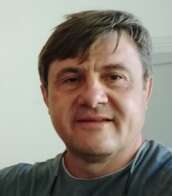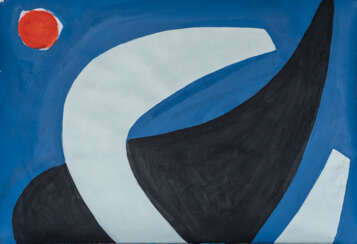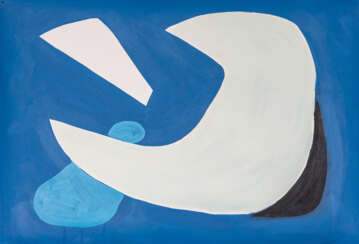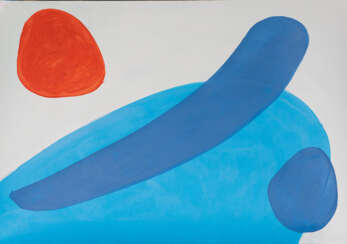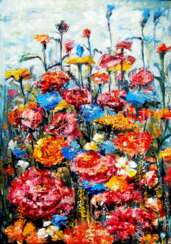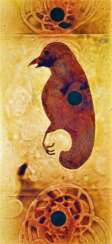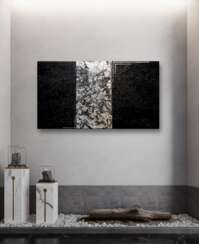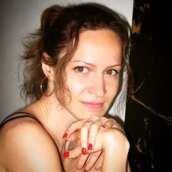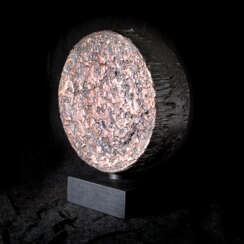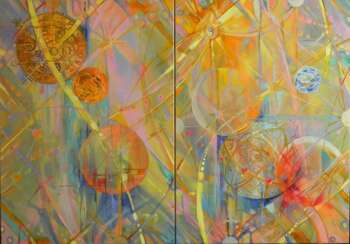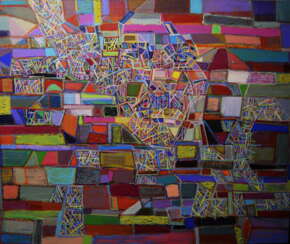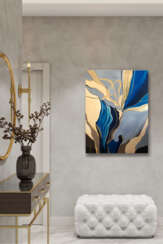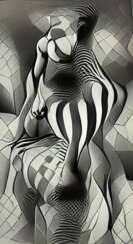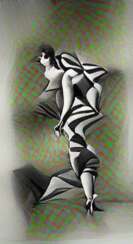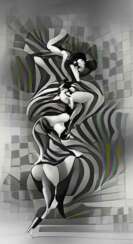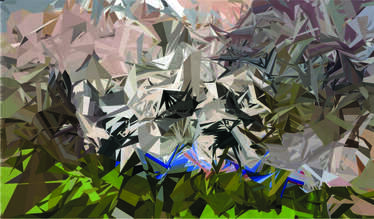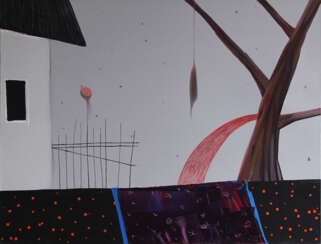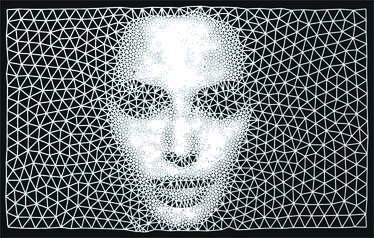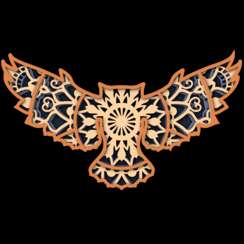105 Items by auctions and galleries:
abstraction géométrique
Lot 104 Eberhard Viegener. Spanische Tänzerin
Eberhard Viegener (1890 - 1967) 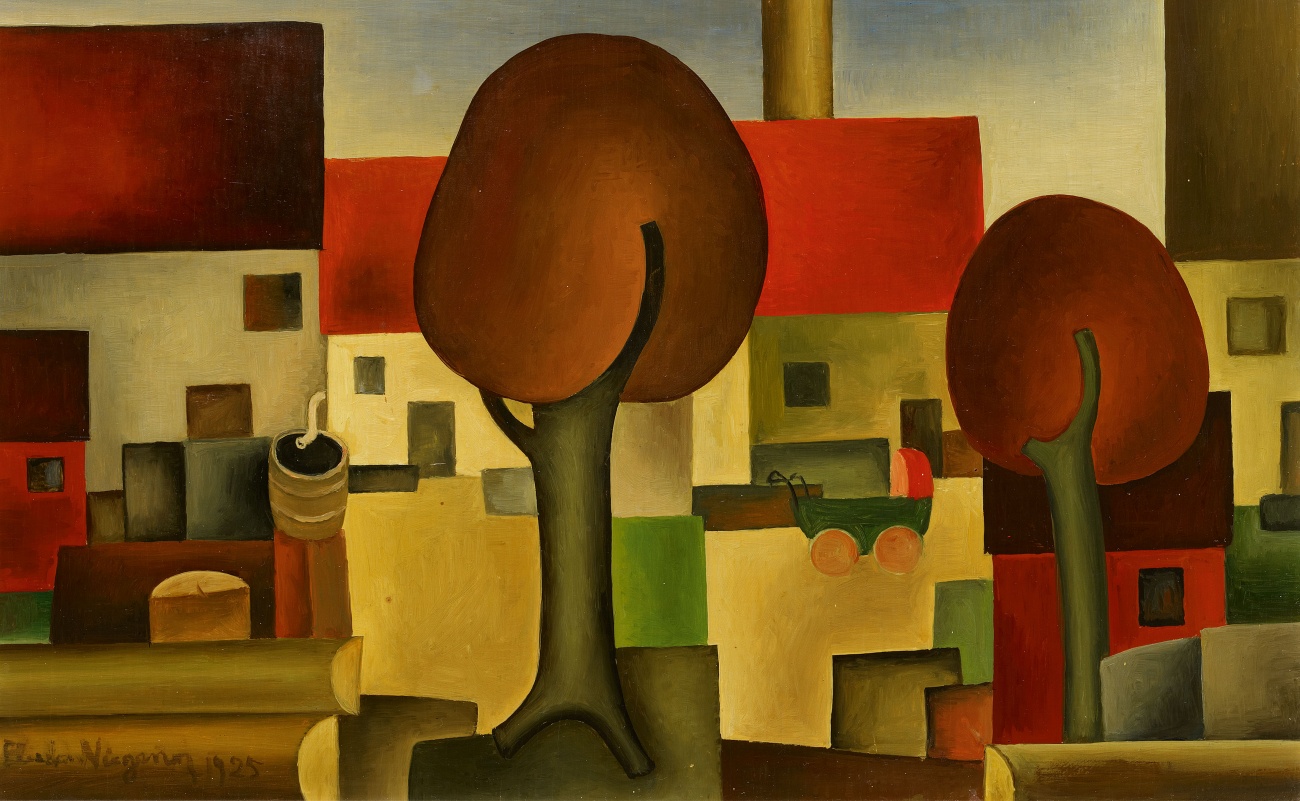 A1277: Modern Art
A1277: Modern Art 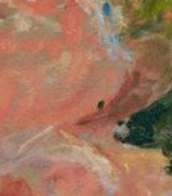

Eberhard Viegener
30.05.1890 - 04.05.1967
Germany
Eberhard Viegener was a German expressionist painter, decorator, and printmaker.
In the 1930s his expressionist works were deemed "degenerate," and during the Nazi "Degenerate Art" campaign a considerable number of them were removed from state collections and destroyed.
Later Figener shifted abruptly from the expressionist style to the style of New Objectivity, or Neue Sachlichkeit. He began to paint, in particular, architectural still lifes with ceramic objects.
Eberhard Figener was the brother of the painter and sculptor Fritz Figener.

VAN HAM Kunstauktionen GmbH
A1277: Modern Art
Date: 06.11.2025 18:00 UTC +01:00
Number of lots in the catalog: 130
Flower's symphony I
Sergiy Roy (b. 1958) 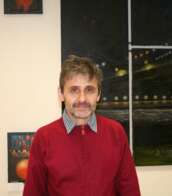 Shop Roy Sergiy
Shop Roy Sergiy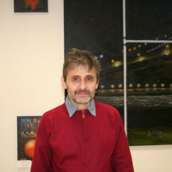

Sergiy Roy
04.04.1958
Ukraine
EXHIBITIONS:
INTERNATIONAL ART EXHIBITION,
MOSKOW, RUSSIA, WARSAW, POLAND, 1984
BASHKIRTSEV’S ART EXHIBITION, MUSEUM OF FINE ART, POLTAVA, UKRAINE, 1988
AVAN/ART IN ROVANIEMI, FINLAND, 1990
ANNUAL NATIONAL ART EXHIBITION, KYIV, UKRAINE, 1990
AVAN/ART, MUSEUM OF FINE ART, MURMANSK, RUSSIA, 1990
AVAN/ART IN JACKSONVILLE, KENT GALLERY, JACKSONVILLE, FLORIDA, USA, 1991
AVAN/ART IN JACKSONVILLE, DAWNTOWN GALLERY, JACKSONVILLE, FLORIDA, USA, 1991
ME+ME+ME+ME+…/AVAN CENTER OF CULTURE MURMANSK, RUSSIA, 1992
NATIONAL EXHIBITION ART GALLERY, KIYV, UKRAINE, 1993
PAN-UKRAINE, DNIPROPETROVSK, UKRAINE, 1995
EXHIBITION MODERN ART GALLERY, POLTAVA, UKRAINE, 2003
REGIONAL EXHIBITION MODERN ART GALLERY, POLTAVA, UKRAINE, 2005
REGIONAL EXHIBITION MODERN ART GALLERY, POLTAVA, UKRAINE, 2007
KYIV-ART. 2008 HOUSE OF TEACHER ,KYIV , UKRAINE 2008
M-ART GALLERY KHARKIV, UKRAINE 2010
IN GARDENS OF VICTORY GALLERY , ODESSA, UKRAINE 2011
Florence Design Week "Crossing People" Exhibition,FLORENCE,ITALY,2013
Gallery Fine ART, POLTAVA,UKRAINE,2013
Gallery " TRYPTYH", KYIV,UKRAINE,2014
Fine ART Gallery ,POLTAVA,UKRAINE,2014
Ukrainian Free Universety, MUNKHEN,GERMANY,2014-2015
ARTGESCHOSS, internationale kunstausstellung, Salzgitter Bad,GERMANY,2017
Art Revolution Taipei,Taiwan , 台北新藝術博覽會,2018
Private collections:
Mr. Roman Kupchinsky (USA, New York)
Dr. Ulf Bethmann (Germany, Hamburg)
Ms. Monika Platek (Poland, Krakov)
Museums and collection:
Jacksonville College (Florida, USA);
Khmelnitsckiy National Art Museum (Ukraine);
Poltava Art Museum (Ukraine);
Modern Art Gallery Poltava (Ukraine);
Austria, Australia, Dubai, USA, Germany, England, Russia, Israel, Irland, New Seland, Taiwan, Ukraine,Poland.

Artist shop
Roy Sergiy
Ukraine
Number of products: 208
Спокойствие миров Зеленой розы
Yulia Ryabova (b. 1972)  Shop Ryabova Yulia
Shop Ryabova Yulia

Yulia Ryabova
05.01.1972
Russia
Я digital художник. Пишу арты на философские темы и по мотивам стихов. Предпочитаю яркие красочные цвета, которые вызывают положительные эмоции. Еще люблю оптические иллюзии и необычные формы.

Artist shop
Ryabova Yulia
Russia
Number of products: 60
Древнее солнце
PAVLOVSKYDESIGN metal and painting (b. 2020)  Shop metal and painting PAVLOVSKYDESIGN
Shop metal and painting PAVLOVSKYDESIGN
PAVLOVSKYDESIGN metal and painting
02.07.2020
Russia
Проект PAVLOVSKYDESIGN (всегда на латинице) объединяет семью Александра, Никиты (Onda) и Анастасии Павловских. Они пришли в проект из разных творческих специальностей и считают, что эта разница при хорошем взаимопонимании дает интересный результат.
Проект начал свое существование в 2020 году, в мае 2021 прошла персональная выставка мастерской. Она называлась «PANTONE 18-1248 RUST» (один из цветов года 2021 – цвет ржавчины) и была посвящена следам времени и событий. Тема выставки явилась знаковой для 2021 года, года пандемии.
О проекте:
Участникам проекта близка концепция о взаимотворчестве человека, природы и времени, при этом темы произведений отражают самые разные проблемы, волнующие авторов на момент создания.
Часто используя материалы с историей – старый производственный металл, кварцевое и переработанное стекло, старое дерево – авторы хотят показать красоту этих материалов с отметинами времени, ведь это след самой жизни, который часто подсказывает идею работы.
Одна из задач проекта – дать вторую, совершенно новую жизнь в искусстве и пространстве тому, что принадлежало уходящей индустриальной эпохе. Дать возможность зрителю взглянуть новым взглядом на совершенно обычные фрагменты, прочувствовать «биографию» материала, приподнять над обыденностью «отходы производства».
Ведь современные люди – последние свидетели старых методов производства и привычных технологий, на наших глазах мир стремительно и необратимо меняется. Куски металла становятся артефактами и занимают достойное место в ряду памятников времени.
Artist shop
metal and painting PAVLOVSKYDESIGN
Russia
Number of products: 10
Полет на Марс
Yury Novikov (b. 1972)  Shop Novikov Yury
Shop Novikov Yury

Yury Novikov
01.10.1972
Ukraine
Привет, меня зовут Юрий Новиков, я профессиональный художник из Украины. Я предпочитаю работать с холстом и маслом, потому что это дает мне большую универсальность.Сейчас я работаю и живу в Харькове.

Artist shop
Novikov Yury
Ukraine
Number of products: 3
Communications
Alex Rubanov (b. 1972)  Shop Rubanov Alex
Shop Rubanov Alex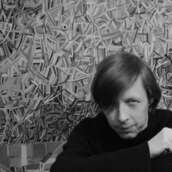

Alex Rubanov
24.06.1972
Ukraine
Rubanov Alexey - Member of the National Union of Artists of Ukraine.
The Participant republican and international exhibitions.
Work are found in quotient collection different countries of the world.
Rubanov Aleksej works in the various genres of painting is a portrait, landscape, still life, genre composition.
Work of artist a decorativeness, simplification of forms, thin colour and dynamic rhythmics, is peculiar to.
Style of works contains symbolism, expressionism, impressionism, abstraction and moderne.
The Color in painting main, on the first place And an object is secondary.
In fact color it is a sound, and music it painting...
Exhibitions:
2020 – «Home and Co-existence» The Second Dafen International Oil Painting Biennale, Shenzhen 2020
2019 - 3rd Alytus International Visual Art Biennial
«ART MEASURE. EVENTS HORIZON» 2019
2019 - The first international triennial "Philosophy of Traveling" 2019, Kremenchug, Ukraine
NATIONAL PAVILION OF UKRAINE AT THE 58TH INTERNATIONAL ART EXHIBITION –LA BIENNALE DI VENEZIA-2019
The first All-Ukrainian Triennial exhibition of "NYU-ART" 2018, Kremenchuk, Ukraine.
International symposium “Colour & Form”2018 Alytus, Lithuania.
3rd Alytus International Biennial of Young Creators .
"ART CODE: LT 100. YOUTH" 2018. Alytus, Lithuania.
The 7th Beijing International Art Biennale, China 2017 "The Silk Road and World’s Civilizations" – 2017.
International Art Exhibitions “Paint one Another, Know one Another” in Yan-Huang Art Museum -, Beijing, China- 2016.
The 6 Beijing International Art of Bienniale - 2015 (BIAB-China-2015 - " Memory and Dreams ")
All-Ukrainian Triennial Abstract art Art Act of 2013 (Chernivtsi)- FIRST PRIZE
All-Ukrainian Triennial of Painting - 2013 (Kiev)
Personal exhibition ,,RHYTHM And BLUES,,- 2011(Komsomolsk)
Republican Art open-air 2011" Kiev picturesque"2011 (Kiev).
The international Art open-air project «Magnus Ducatus Artis» 2010 (ODESSA AREA / New Frumushika - 2010)
Republican exhibition Portret 2

Artist shop
Rubanov Alex
Ukraine
Number of products: 10
ГЕОМЕТРИЧЕСКАЯ АБСТРАКЦИЯ
Yulia Ponomareva (b. 1982)  Shop Ponomareva Yulia
Shop Ponomareva Yulia

Yulia Ponomareva
25.06.1982
Russia
Юлия, художница из г.Москвы, 39 лет, родилась в Сибири (г.Барнаул Алтайского края). Она выражает мир своими яркими красками, показывая мир и природу самыми разнообразными способами.
С детства учителя изобразительного искусства в школе говорили, что у Юлии есть талан и ее необходимо отдать в художественную школу. Но из-за занятости родителей на работе не было возможности водить ее на занятия в художественную школу, а когда Юлия была уже взрослая у нее не было возможности уделять этому время. Талант Юлии передался от отца (как и таланты по танцам,музыке и вокалу), который писал прекрасные картины, в том числе портреты, но никогда не обучался этому искусству.
Несмотря на свой творческий потенциал всю сознательную взрослую жизнь Юлия занимается юриспруденцией и достигла в этом очень хороших результатов.И вот после переезда в Москву, в 2018 году она смогла осуществить свою детскую мечту, пошла обучаться в художественную школу. Самая первая картина написана ей в 2018 году под названием «Вдали от городской суеты». Обучение продолжалось более года,но к сожалению из-за занятости на работе ей пришлось бросить эти занятия.Но любовь в написанию картин маслом навсегда закралась в ее сердце.Да и восторженные отклики друзей и родственников зародили в ней желание дальше продолжать писать картины. За период обучения ей написано более 10 картин, часть которых по просьбам родственников подарены им. В 2019 году Юлия забросила учебу и стала редко писать картины.
И вот в период пандемии случился новый этап в ее жизни по направлению живописи. В 2021 году Юлия находилась долгое время на больничном дома и совершенно случайно ей встретились онлайн-курсы по интерьерной живописи. Пройдя обучение Юлия получила новые знания и сертификат. Попробовав новую технику живописи Юлия стала работать не только с маслом, но и с акриловыми красками, поталью, штукатуркой и эпоксидной смолой.

Artist shop
Ponomareva Yulia
Russia
Number of products: 15
Что спрятано внутри
Elisaveta Lisina (b. 2003) 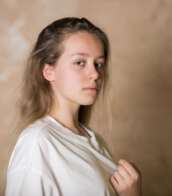 Shop Lisina Elisaveta
Shop Lisina Elisaveta

Elisaveta Lisina
26.03.2003
Russia
Всем привет! Или же Hi! А может, ¡Hola! ?)
Меня зовут Лиза, мне 17 лет.
В детстве ходила в художественную школу в течение 5 лет.
С раннего детства рука полюбила это чувство свободы творить искусство на листе бумаги.
Всегда хвалили мой талант и восхищались тем, что я рисовала.
С таким видом творчества я на ТЫ.
Рисую что в голову придёт, когда приспичит и чем угодно! (Акварель, масло, карандаш, т.д.)
Продаю картины.
Надеюсь, не остаться не замеченной в этой сфере:)
Спасибо за внимание! Всего вам самого наилучшего!

Artist shop
Lisina Elisaveta
Russia
Number of products: 2
«Синяя»
Ekaterina Hohryakova (b. 1992)  Shop Hohryakova Ekaterina
Shop Hohryakova Ekaterina

Ekaterina Hohryakova
03.08.1992
Russia
Молодая российская художница, родилась 3 августа 1992 года в малюсеньком городке в Казахстане. Сейчас творит и проживает в Челябинске. 2 года до этого жила и вдохновлялась Петербургом. Работы художницы раскиданы в частных коллекциях от Петербурга до Камчатки. Ищущая смысл жизни в картинах, в их реализации и сочетании и влиянии цвета на нашу жизнь. На картинах ровно то, что вы видите и ничего больше. Но, как и все люди мы ищем смысл везде и всюду.

Artist shop
Hohryakova Ekaterina
Russia
Number of products: 8
Полоски в клеточку 6zV
Yulia Ryabova (b. 1972)  Shop Ryabova Yulia
Shop Ryabova Yulia

Yulia Ryabova
05.01.1972
Russia
Я digital художник. Пишу арты на философские темы и по мотивам стихов. Предпочитаю яркие красочные цвета, которые вызывают положительные эмоции. Еще люблю оптические иллюзии и необычные формы.

Artist shop
Ryabova Yulia
Russia
Number of products: 60
Полоски в клеточку Eck
Yulia Ryabova (b. 1972)  Shop Ryabova Yulia
Shop Ryabova Yulia

Yulia Ryabova
05.01.1972
Russia
Я digital художник. Пишу арты на философские темы и по мотивам стихов. Предпочитаю яркие красочные цвета, которые вызывают положительные эмоции. Еще люблю оптические иллюзии и необычные формы.

Artist shop
Ryabova Yulia
Russia
Number of products: 60
Полоски в клеточку z6j
Yulia Ryabova (b. 1972)  Shop Ryabova Yulia
Shop Ryabova Yulia

Yulia Ryabova
05.01.1972
Russia
Я digital художник. Пишу арты на философские темы и по мотивам стихов. Предпочитаю яркие красочные цвета, которые вызывают положительные эмоции. Еще люблю оптические иллюзии и необычные формы.

Artist shop
Ryabova Yulia
Russia
Number of products: 60
Геометрическая абстракция
Yulia Ryabova (b. 1972)  Shop Ryabova Yulia
Shop Ryabova Yulia

Yulia Ryabova
05.01.1972
Russia
Я digital художник. Пишу арты на философские темы и по мотивам стихов. Предпочитаю яркие красочные цвета, которые вызывают положительные эмоции. Еще люблю оптические иллюзии и необычные формы.

Artist shop
Ryabova Yulia
Russia
Number of products: 60
Унылый пейзаж
Eugene Panov (b. 1974)  Shop Panov Eugene
Shop Panov Eugene

Eugene Panov
02.02.1974
Uzbekistan
Биография.
Панов Евгений родился в 1974 году в Ташкенте. Детство и юность провел там же.
В 1993 году поступил в республиканское художественное училище имени Бенькова.
В 1998 году закончил училище. Со студенческих времён участвовал в сборных выставках со студентами училища.
В 1999 году сделал персональную выставку в галерее "Мастер".
В том же году состоялась выставка в зале театра "Ильхом" с художницей Дилярой Каиповой.
В 2000 уезжает в Санкт Петербург где делает выставку в арт сквоте Пушкинская 10.
В 2003 году возвращается в Ташкент и с того времени живет и работает в любимом городе. Это время Евгений экспериментирует с новыми технологиями ставшими доступными массовому пользователю. Изучает 3D графику и работает в кино и рекламе.
С 2006 по 2010 год делает рекламные ролики сотрудничая с рекламными агентствами города. Параллельно делает несколько проектов упаковки с мульт-героями. Увлекается анимацией. Делает несколько комбинированных с 3D роликов ставших популярными.
В 2014 году Евгений возвращается к живописи. Евгений открывает для себя красоту акварельной техники и очарование пейзажем. Евгений начинает новый проект «Старый Ташкент», создавая акварели, посвященные родному городу.
В 2016 году Евгений делает персональную выставку акварели «Tashkent Nostaljie» в галерее "Bonum Factum".
Вниманию зрителя была представлена выставка «Старый Ташкент. Уходящая старина.» акварельных работ Евгения Панова.
Ноябрь-декабрь 2021 года была проведена персональная выставка в Центральном Выставочном Зале Узбекистана.
На выставке были представлены картины, по путешествиям по родной стране.
Благодаря хорошему владению акварельной техникой, картины были написаны очень детализировано.

Artist shop 

Panov Eugene
Uzbekistan
Number of products: 50
Лицо из тени
Yulia Ryabova (b. 1972)  Shop Ryabova Yulia
Shop Ryabova Yulia

Yulia Ryabova
05.01.1972
Russia
Я digital художник. Пишу арты на философские темы и по мотивам стихов. Предпочитаю яркие красочные цвета, которые вызывают положительные эмоции. Еще люблю оптические иллюзии и необычные формы.

Artist shop
Ryabova Yulia
Russia
Number of products: 60
Силуэтная мандала "Сова в полете"
Yulia Ryabova (b. 1972)  Shop Ryabova Yulia
Shop Ryabova Yulia

Yulia Ryabova
05.01.1972
Russia
Я digital художник. Пишу арты на философские темы и по мотивам стихов. Предпочитаю яркие красочные цвета, которые вызывают положительные эмоции. Еще люблю оптические иллюзии и необычные формы.

Artist shop
Ryabova Yulia
Russia
Number of products: 60


